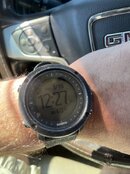Most computers - as I understand it - calculate a new solution from the point at which you are. If that's not the original plan, they give you a new plan, basically. Suunto tosses the towel instead, leaving you hanging in a deco situation without any deco information or recalculated plan. That is not a 'safety feature' as they call it. That is giving up when you most need that info and a new plan.
Punishing me for not doing a deco stop? Reprimand me afterward, when I'm on dry land safe and sound. Penalize me with a 48-hour lock-out if you want. But not mid-dive, please.
My personal issue with my Suunto (EON Core) was a lock-out mid-dive for no apparent reason. I was not doing a deco dive, I was well within my NDL. It just said 'locked'. Or rather: 'good luck, I'm off'.




